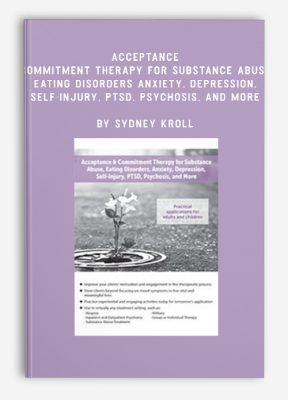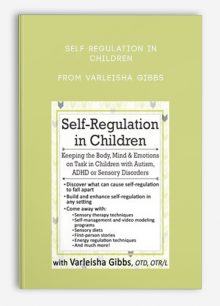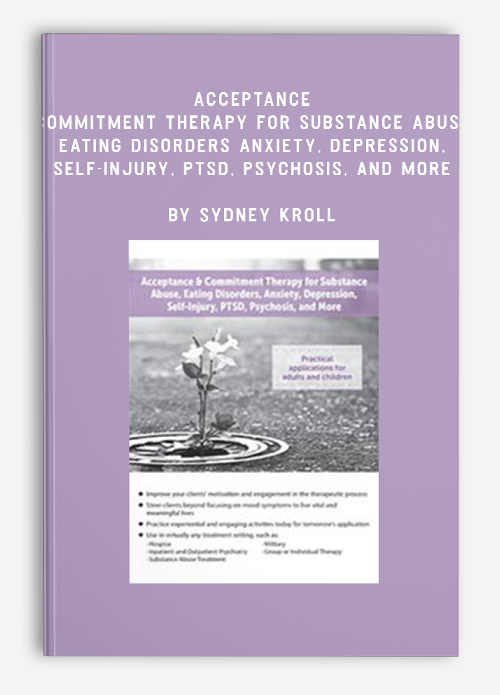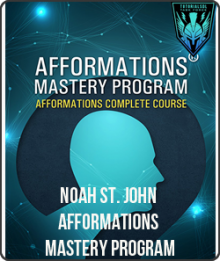Subtotal: $79.00
Acceptance & Commitment Therapy for Substance Abuse, Eating Disorders, Anxiety, Depression, Self-Injury, PTSD, Psychosis, and More by Sydney Kroll
$219.99 $62.00

Acceptance & Commitment Therapy for Substance Abuse, Eating Disorders, Anxiety, Depression, Self-Injury, PTSD, Psychosis, and More by Sydney Kroll
**More information:
Get Acceptance & Commitment Therapy for Substance Abuse, Eating Disorders, Anxiety, Depression, Self-Injury, PTSD, Psychosis, and More at Salaedu.com
Description
Acceptance and Commitment Therapy (ACT) is a unique and innovative approach that helps clients to fundamentally change their relationship with their thoughts and feelings; to live in the present moment; to stop reacting and start responding; and to allow their values to guide them in a more rich and meaningful life. In ACT, clients utilize skills in mindfulness to accept the painful aspects of their lives while at the same time reducing the experiential avoidance that causes suffering. In other words, “Pain is inevitable. Suffering is optional.” Move your clients toward focusing on identifying what matters in their lives and taking actions in service of those values.
In this recording Sydney Kroll, PsyD, shares an introduction to the research and theory behind ACT so you can clearly articulate the empirical evidence for this model. Experiential and engaging activities are used throughout the course to illustrate specific techniques and concepts. Dr. Kroll shows you how to apply these strategies to virtually any client population. Walk away with the skills and tangible resources to use immediately in your practice for better client outcomes and a greater sense of purpose as a clinician.
THE EMPIRICAL EVIDENCE
- Relational frame theory (RFT)
- Cognitive psychology
- Third wave of behavioral interventions
- Supporting evidence
- Transdiagnostic nature of ACT
PSYCHOLOGICAL FLEXIBILITY
- Hexaflex Model
- Paradigm shift
PAIN VS. SUFFERING
- Avoidance
- Creative hopelessness
- What’s the goal?
THE SIX CORE PROCESSES
- Mindfulness
- Cognitive defusion
- Acceptance
- Self-as-concept
- Values
- Committed actions
INTERVENTIONS
- Practicing mindfulness (traditional and innovative strategies)
- Teaching clients to get out of their minds
- Presenting acceptance in a way people will accept
- Exploring observing self
- Values exploration
- Making committed actions in service of values
APPLICATION ISSUES
- Individual therapy
- Group therapy
- Inpatient
- Behavioral health settings
- ACT and psychopharmacology issues
RESOURCES FOR FURTHER TRAINING
- Collaboration and support
- Formal trainings
- Applying ACT in your unique settings
More information about Medical:
Medicine is the science and practice of establishing the diagnosis, prognosis, treatment, and prevention of disease.
Medicine encompasses a variety of health care practices evolved to maintain and restore health by the prevention and treatment of illness.
Contemporary medicine applies biomedical sciences, biomedical research, genetics, and medical technology to diagnose, treat, and prevent injury and disease,
typically through pharmaceuticals or surgery, but also through therapies as diverse as psychotherapy, external splints and traction, medical devices, biologics, and ionizing radiation, amongst others.
Medicine has been around for thousands of years, during most of which it was an art (an area of skill and knowledge) frequently having connections to the religious and
philosophical beliefs of local culture. For example, a medicine man would apply herbs and say prayers for healing, or an ancient philosopher and physician would apply bloodletting according to the theories of humorism.
In recent centuries, since the advent of modern science, most medicine has become a combination of art and science (both basic and applied, under the umbrella of medical science).
While stitching technique for sutures is an art learned through practice, the knowledge of what happens at the cellular and molecular level in the tissues being stitched arises through science.
1 review for Acceptance & Commitment Therapy for Substance Abuse, Eating Disorders, Anxiety, Depression, Self-Injury, PTSD, Psychosis, and More by Sydney Kroll
Add a review Cancel reply
Related products
HEALTH - FITNESS - LIFESTYLE - MEDICAL
HEALTH - FITNESS - LIFESTYLE - MEDICAL
HEALTH - FITNESS - LIFESTYLE - MEDICAL
HEALTH - FITNESS - LIFESTYLE - MEDICAL
HEALTH - FITNESS - LIFESTYLE - MEDICAL
Fast Confidence [How To Be More Confident │Confidence Building] from Sharon Melnick, Ph.D.
HEALTH - FITNESS - LIFESTYLE - MEDICAL
HEALTH - FITNESS - LIFESTYLE - MEDICAL
HEALTH - FITNESS - LIFESTYLE - MEDICAL

 Deepak Wayne - The Ultimate Seduction Model
Deepak Wayne - The Ultimate Seduction Model  Self-Regulation in Children from Varleisha Gibbs
Self-Regulation in Children from Varleisha Gibbs 



![Fast Confidence [How To Be More Confident │Confidence Building] from Sharon Melnick, Ph.D.](https://tradersoffer.forex/wp-content/uploads/2017/05/Sharon-Melnick-Ph.D.-Fast-Confidence-How-To-Be-More-Confident-│Confidence-Building-220x261.png)



Trevis Trevis –
Welcome to Sala Shop, we are here to provide everything to learn and improve this life…encourage you to check clearly the course